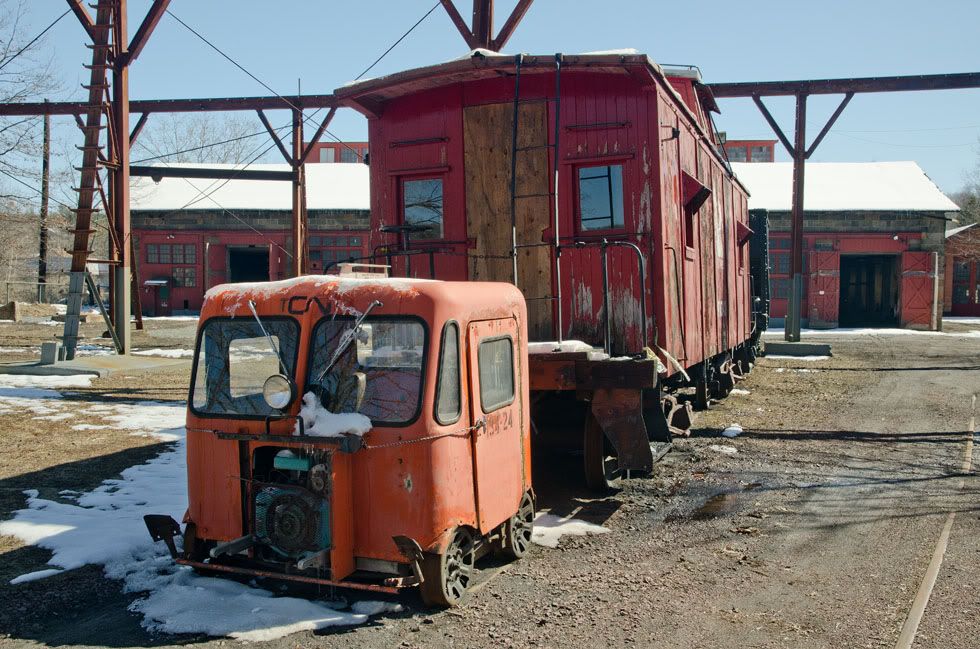
Car and Caboose (Nikon D 7000, Nikkor 16-85mm @iso100)
Last Sunday, I found myself on a drive in the farmland between White Haven, and the town of Weatherly, near my home in Pennsylvania. This is a rural area, and I was hoping to find scenes featuring the rapidly melting snow, hopefully contrasting with subtle signs of spring.
Once I reached Weatherly, I drove to the area near Black creek, where there exists an old railroad yard with a roundhouse and foundry, used to build and repair steam locomotives.
From signs on the site, could see that there was an effort underway to restore and preserve these venerable structures. From what I could see of the buildings current condition, this would be a formidable undertaking to say the least.
The largest building was open, so I thought I’d explore. I grabbed my D 7000, mounted the only “fast” lens I had with me (a 35mm f 2.0 Nikkor) and my monopod, and entered the structure.
The building was huge, largely empty, but still there were artifacts of the past scattered about. A huge press, undoubtedly too big to move, sat near one of the huge doors.

The Press (Nikon D 7000, Nikkor 35mm f2.0 @iso 1600)
The cantilevered roof had collapsed in the center and water from melting snow cascaded over the huge support beams and showered the center of the interior. I began to shoot, mildly concerned about the potential for falling debris.
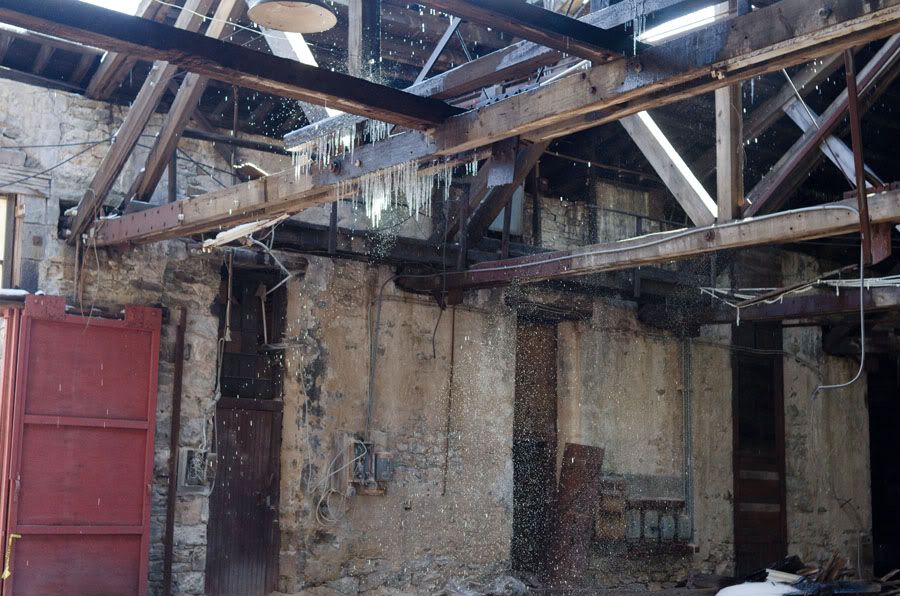
Leaking Roof (Nikon D 7000, Nikkor 35mm f2.0 @iso 800)
I realized that this would be a good opportunity to test the dynamic range of the D-7000.
As an owner of a Fuji S-5 I am spoiled. This camera has an extraordinary ability to record a wide range of brightness in a single shot. The D 7000 however, is supposed to be even better.
To take advantage of this attribute you have to shoot each camera differently.
With the S-5, one exposes to the left; or in other words, one sets the exposure so that the darkest regions are reasonably exposed , but leaves the highlights be just a bit “burned out”. Given the dual-pixel design of the Fuji sensor, you can “pull back the highlights in Photoshop, and still find detail.
With the D 7000 the exposure is set in the time-honored method of exposing to the right, setting the camera so that the brightest part of the scene is well exposed, but the darkest areas look black.

In Photoshop, one can then use the “brightness” and “fill light” sliders (working as always, in RAW) to bring up the dark portions of the image.
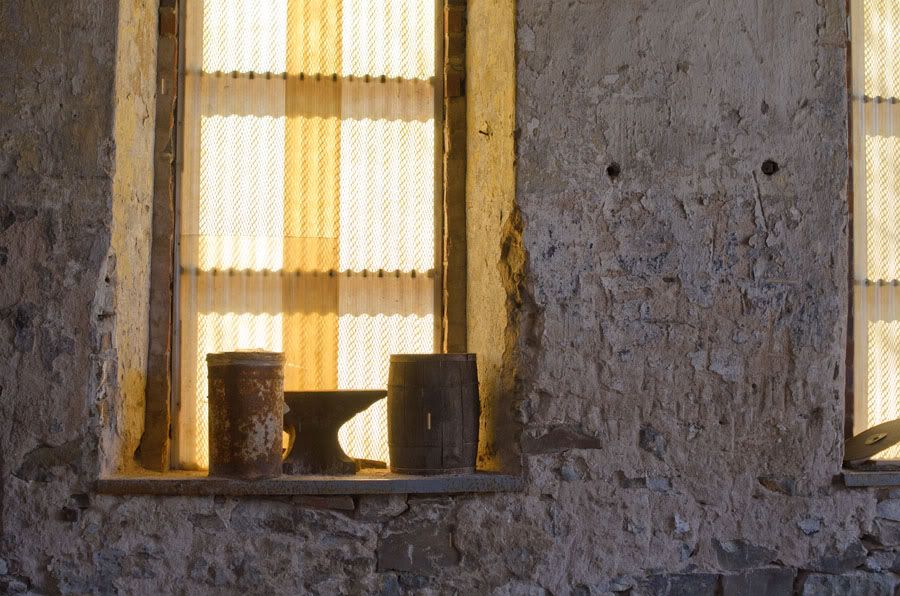
The Window (Nikon D 7000, Nikkor 35mm f2.0 @iso 200)
The problem usually is, that when one “pushes” the dark areas, you usually end up with noise, which limits what you can do.
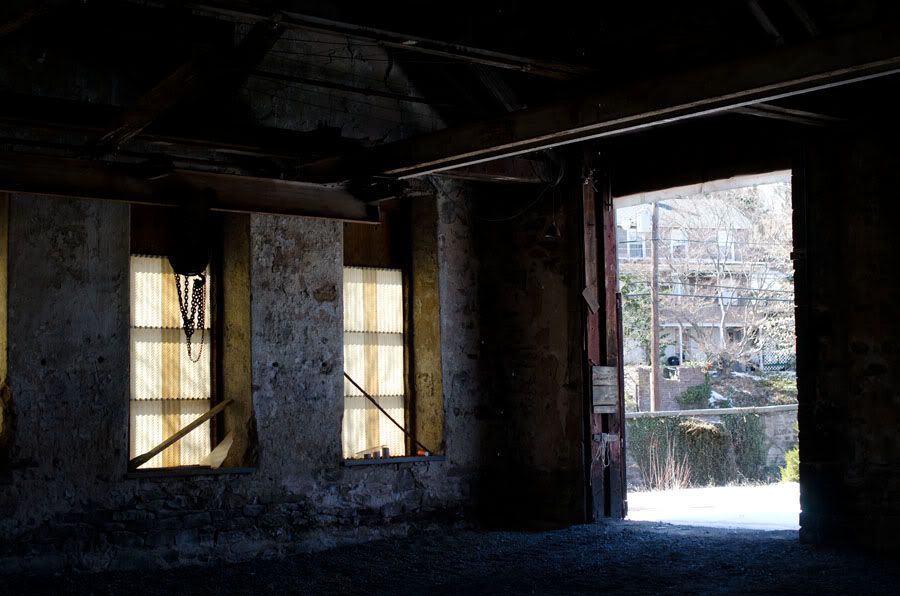
With the D 7000 however, you seem to be able to push hard on the dark areas without creating the luminance and color noise that plagued earlier designs. I’m not sure why the lower-noise Fx Nikons wouldn’t be even better for this, but apparently they’re not (except at higher ISOs).
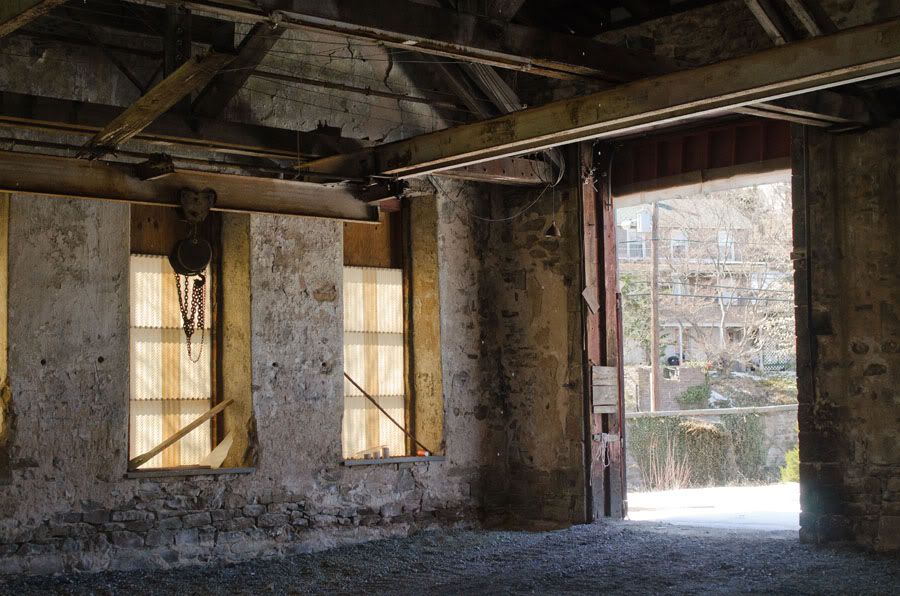
Yellow Windows and Door (Nikon D 7000, Nikkor 35mm f2.0 @iso 200)
On the image above, there was some snow at the threshold of the door that I couldn’t help overexposing.
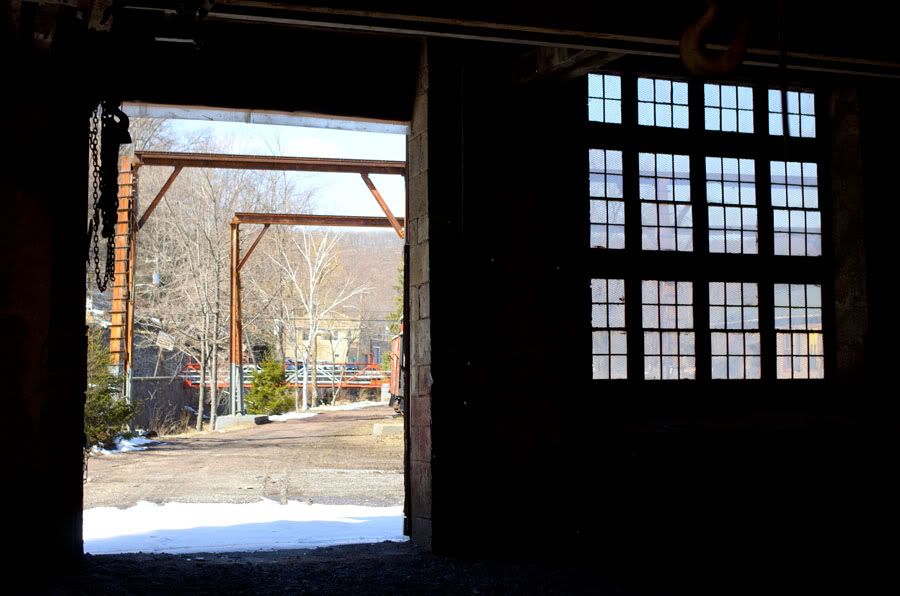
Here’s one more shot, from a different vantage point.
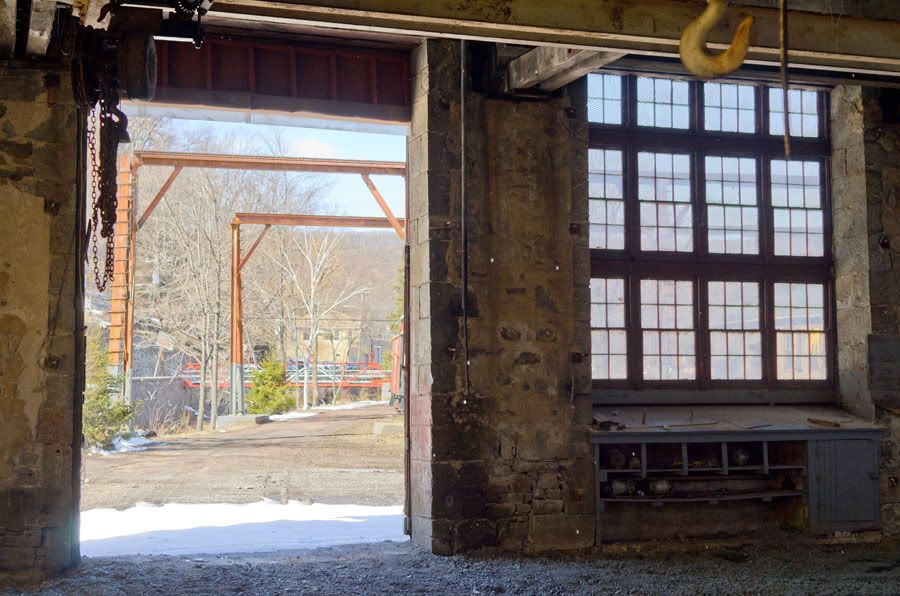
Towards the Yard (Nikon D 7000, Nikkor 35mm f2.0 @iso 200)
All in all, I am rather impressed with this little DSLR.
Anybody want to buy an S-5? (They still shoot the best wedding Jpgs around.)
